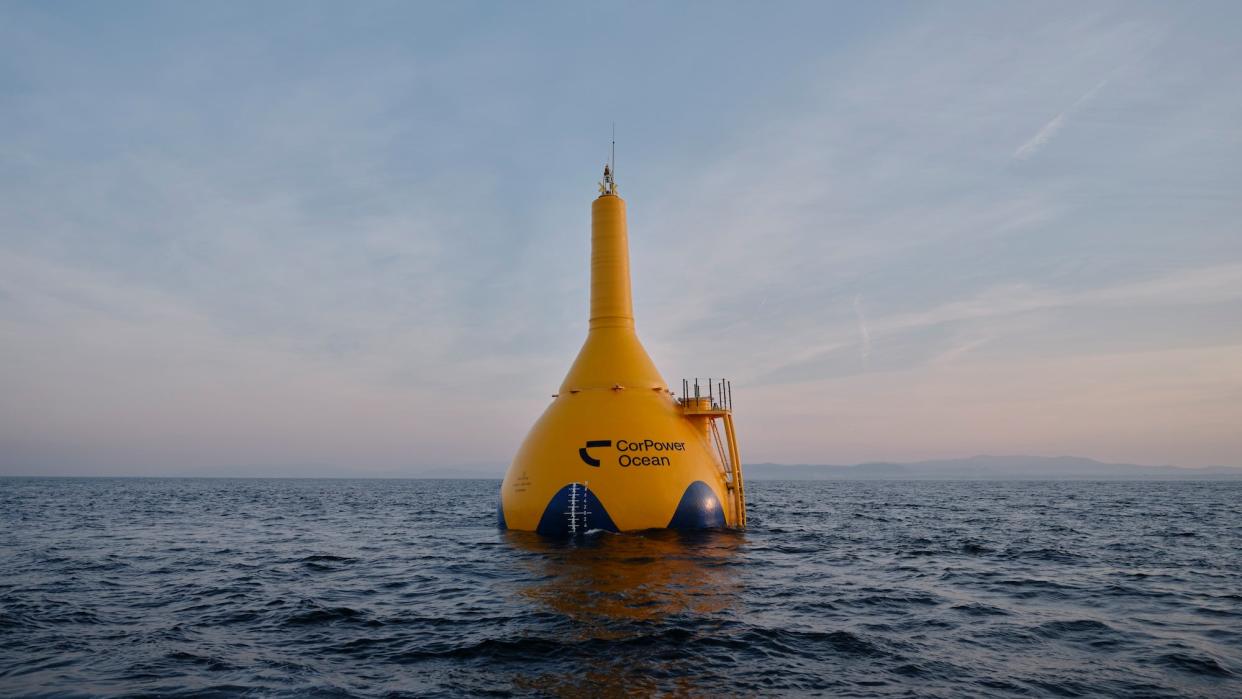Huge 60-foot-tall buoy uses ocean waves to create clean energy

Giant buoys over 60-feet tall may one day generate clean energy to feed into local power grids—but making it a reality isn’t as simple as going with the ocean’s flow. To successfully keep the idea afloat, it’s all about timing.
Swedish company CorPower recently announced the completion of its first commercial scale buoy generator demonstration program off the coast of northern Portugal. Over the course of a six-month test run, CorPower’s three-story C4 Wave Energy Converter (WEC) endured four major Atlantic storms and adapted to constantly shifting wave heights. Although final analysis is still ongoing, CorPower believes the technology offers a promising new way to transition towards a sustainable future.
As New Atlas explains, the basic theory behind CorPower’s C4 is relatively straightforward. As its air-filled chassis bobs along the rolling waves, an internal system converts the up-and-down movement into rotational power for energy generation. At the same time, however, a tensioned, internal pneumatic cylinder reacts in real-time to wave phases—slightly delaying its movements behind the waves amplifies the buoy’s bobbing, thus creating even more energy production. According to CorPower, using this system can boost power generation as much as 300-percent.
But what about when the sea inevitably gets choppier, as was the case during storms that produced waves nearly as high as the C4 itself? When this happens, the pneumatic cylinder switches off its active control to allow the machine to enter “transparent” mode, during which time it simply rides out the adverse ocean conditions until it's time to spring back into action. CorPower compares this “tuning and detuning” feature to similar systems in wind turbines, which adjust the pitch of their blades in response to surrounding weather conditions.
[Related: Huge underwater ‘kite’ turbine powered 1,000 homes in the Faroe Islands.]
CorPower says its team recorded as much as 600kW of peak power production during the C4 trial, although they believe it's possible for the buoy’s current version to ramp that up to around 850kW. While that by itself isn’t much compared to a single offshore wind turbine’s multi-megawatt range, CorPower’s plan is to eventually deploy thousands of more efficient WEC machines to create a much more powerful generator network. If it can scale a farm up to produce 20 gigawatts of energy, it estimates the buoys could offer something between $33-$44 per megawatt-hour. That’s pretty attractive to investors, especially given C4’s aquatic power source operates virtually 24/7, unlike wind or solar generators.
Right now, however, 20 gigawatts would require over 20,000 buoys, so a more economical and efficient buoy system is definitely needed before anyone starts seeing fleets of these canary yellow contraptions floating out there on the open oceans. CorPower seems confident it can get there, and is next planning a new trial phase that will see multiple C4 buoys in action.

